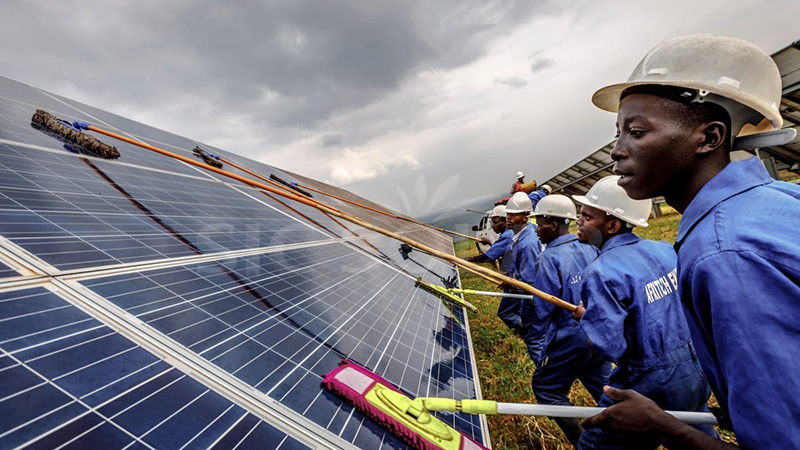
Solar mounting structures are the backbone of any solar energy installation, providing the necessary support to keep solar panels securely in place for decades. However, like any infrastructure, these mounting systems require regular maintenance to ensure their longevity and optimal performance. Below are key maintenance practices to help you get the most out of your solar mounting structures.
1. Regular Inspections
Why It’s Important: Regular inspections are crucial to identify any potential issues before they become serious problems. Over time, mounting structures can experience wear and tear due to exposure to the elements, mechanical stress, or even wildlife interference.
What to Do: Schedule routine inspections at least once or twice a year. During these inspections, check for signs of corrosion, loose bolts, or any visible damage to the structure. Inspect the structural integrity of the mounting system, paying close attention to the joints, fasteners, and the areas where the structure is anchored to the ground or roof.
SIC Solar designs their photovoltaic mounting systems with durability in mind, but even the best systems benefit from regular checks to ensure they continue to perform optimally.
2. Corrosion Management
Why It’s Important: Corrosion is a significant threat to the longevity of solar mounting structures, particularly in areas with high humidity, salinity, or extreme weather conditions. Corroded components can weaken the entire structure, leading to potential failures.
What to Do: Ensure that all exposed metal parts are made from or coated with corrosion-resistant materials like anodized aluminum or stainless steel. During inspections, look for any signs of rust or corrosion, especially on metal fasteners and joints. If corrosion is detected, clean and treat the affected areas immediately and replace severely corroded components.
SIC Solar products are engineered with corrosion-resistant materials, minimizing the risk, but periodic checks will help catch any issues early.
3. Tightening and Securing Fasteners
Why It’s Important: Over time, vibrations from wind and thermal expansion can cause bolts and fasteners to loosen. Loose fasteners can compromise the stability of the mounting system, posing a risk to both the panels and the structure itself.
What to Do: During each inspection, check that all bolts, nuts, and other fasteners are securely tightened. Use a torque wrench to ensure that the fasteners are tightened to the manufacturer’s recommended specifications. If any fasteners appear damaged or worn out, replace them promptly to maintain the integrity of the system.
SIC Solar mounting systems are designed for easy maintenance, with accessible fasteners that make this task straightforward.
4. Cleaning and Debris Removal
Why It’s Important: Debris such as leaves, dirt, and snow can accumulate on the mounting structure, leading to increased weight and potential damage. Over time, this buildup can cause stress on the structure, especially in regions with heavy snowfall or strong winds.
What to Do: Keep the mounting structure clean by regularly removing any debris that may accumulate. For roof-mounted systems, ensure that gutters and drainage systems are clear to prevent water buildup, which can lead to rust or mold. In winter, remove snow from the panels and mounting structures to prevent excessive loading.
SIC Solar designs are built to handle various environmental conditions, but regular cleaning ensures that your system remains in top condition.
5. Monitoring for Ground or Roof Movement
Why It’s Important: Shifts in the ground due to erosion, settling, or seismic activity, as well as roof movement caused by structural changes or thermal expansion, can affect the stability of the mounting system.
What to Do: Monitor the ground or roof where the mounting system is installed for any signs of movement or instability. Look for cracks in the foundation or shifts in the structure’s alignment. If any movement is detected, consult with a structural engineer to assess the situation and make necessary adjustments.
SIC Solar offers mounting systems with adaptable designs that can accommodate minor movements, but ongoing monitoring is essential to address any major shifts.
6. Environmental Adaptation
Why It’s Important: Different environments present unique challenges to solar mounting structures. Coastal areas may have high salt content in the air, while desert regions may experience sand abrasion. Adapting your maintenance practices to these specific conditions is crucial for long-term performance.
What to Do: Tailor your maintenance plan to the local environment. For instance, in coastal areas, increase the frequency of corrosion checks and apply additional protective coatings if necessary. In dusty regions, more frequent cleaning might be needed to prevent abrasive damage.
SIC Solar products are designed to withstand diverse environmental conditions, but customized maintenance plans ensure that your system is fully protected against local challenges.
Regular maintenance is key to ensuring the longevity and reliability of your solar mounting structures. By conducting regular inspections, managing corrosion, securing fasteners, keeping the system clean, monitoring for movement, and adapting to environmental conditions, you can protect your investment and ensure that your solar energy system continues to perform at its best for years to come.
With SIC Solar high-quality mounting systems, you’re already starting with a durable and reliable foundation. By following these maintenance practices, you can further enhance the lifespan and performance of your solar installation, ensuring that it delivers clean, renewable energy for decades.